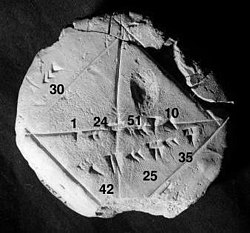
Numerical analysis is the study of algorithms that use numerical approximation (as opposed to symbolic manipulations) for the problems of mathematical analysis (as distinguished from discrete mathematics). It is the study of numerical methods that attempt to find approximate solutions of problems rather than the exact ones. Numerical analysis finds application in all fields of engineering and the physical sciences, and in the 21st century also the life and social sciences like economics, medicine, business and even the arts. Current growth in computing power has enabled the use of more complex numerical analysis, providing detailed and realistic mathematical models in science and engineering. Examples of numerical analysis include: ordinary differential equations as found in celestial mechanics (predicting the motions of planets, stars and galaxies), numerical linear algebra in data analysis,[2][3][4] and stochastic differential equations and Markov chains for simulating living cells in medicine and biology.
Before modern computers, numerical methods often relied on hand interpolation formulas, using data from large printed tables. Since the mid 20th century, computers calculate the required functions instead, but many of the same formulas continue to be used in software algorithms.[5]
The numerical point of view goes back to the earliest mathematical writings. A tablet from the Yale Babylonian Collection (YBC 7289), gives a sexagesimal numerical approximation of the square root of 2, the length of the diagonal in a unit square.
Numerical analysis continues this long tradition: rather than giving exact symbolic answers translated into digits and applicable only to real-world measurements, approximate solutions within specified error bounds are used.
- ^ "Photograph, illustration, and description of the root(2) tablet from the Yale Babylonian Collection". Archived from the original on 13 August 2012. Retrieved 2 October 2006.
- ^ Demmel, J.W. (1997). Applied numerical linear algebra. SIAM. doi:10.1137/1.9781611971446. ISBN 978-1-61197-144-6.
- ^ Ciarlet, P.G.; Miara, B.; Thomas, J.M. (1989). Introduction to numerical linear algebra and optimization. Cambridge University Press. ISBN 9780521327886. OCLC 877155729.
- ^ Trefethen, Lloyd; Bau III, David (1997). Numerical Linear Algebra. SIAM. ISBN 978-0-89871-361-9.
- ^ Brezinski, C.; Wuytack, L. (2012). Numerical analysis: Historical developments in the 20th century. Elsevier. ISBN 978-0-444-59858-5.